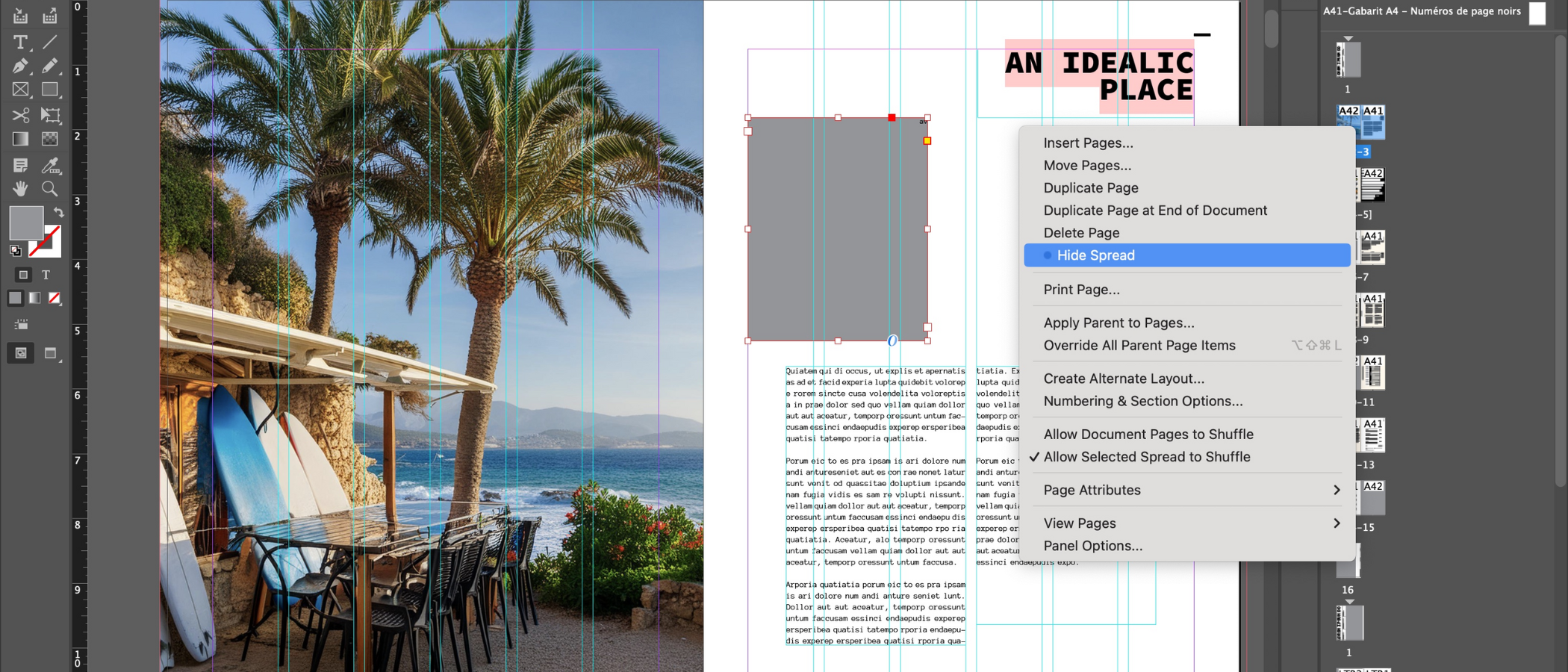TechRadar Verdict
There’s no question Adobe InDesign was already a very accomplished DTP application, and although there are no major new features, all the small improvements introduced since last year make for a much better experience all-round, and should benefit most (if not all) workflows.
Pros
- +
Multi-platform
- +
Lots of nice improvements
- +
Embedded AI generated content
Cons
- -
Subscription only
- -
Can be overwhelming for newcomers
- -
No major new unique tentpole feature
Why you can trust TechRadar
If you’re a page layout designer, magazine-maker, or print artist, you’ll be very familiar with Adobe InDesign - a page layout tool that stole the best DTP software crown from QuarkXpress many decades ago, and never looked back. Since then, it’s become an industry-standard for digital design, and Adobe has maintained a steady stream of updates.
We were impressed with InDesign when we last reviewed the software - and we wanted to know how the DTP app compares in 2024.
Adobe InDesign: Pricing & plans
- As with any other Adobe product, you can only rent it, but you do have a few options on how to do so.
Adobe rents its software out to customers, so rather than paying a one-off high price, you pay a smaller amount every month. The main advantage of this concept is that you get all future updates, large or small, completely free. The downside obviously is that you have to keep on paying the piper, and the moment you stop, you lose access to the software.
There are various options open to you to get your hands on InDesign. One of these is simply paying to use that app on its own, which would cost you around $23 per month (through a yearly plan); paying month to month is considerably more expensive at $34.50.
Alternatively, you can opt for the full ‘Creative Cloud All Apps’ package, which includes InDesign along with over 20 other software packages such as Photoshop, Illustrator, and many more. This will set you back $60 a month (on a yearly plan) or $90 on a month by month basis.
In addition to that, teachers and students get a discount - they can only get the full package, but it’s greatly reduced to $20 for the yearly plan. Schools, universities and businesses get different rates.
- Pricing & plans: 3/5
Adobe InDesign: What’s It All About?
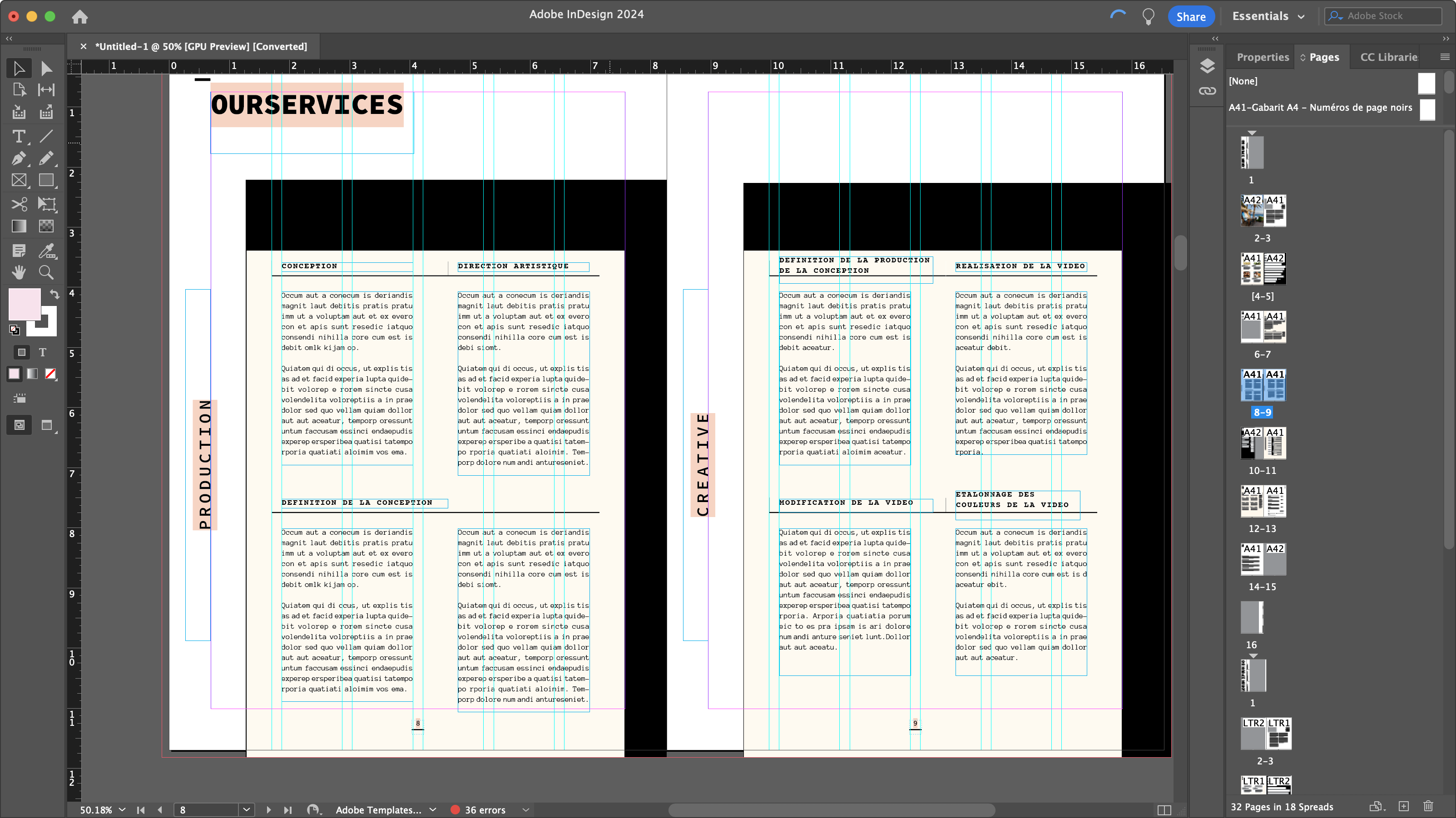
- A powerful, highly versatile piece of software, that allows you to design pretty much anything, from the simplest of leaflets, to intricate magazines, and more.
InDesign is a desktop publishing powerhouse. You could use it to design something as simple as a business card, to a detailed magazine containing hundreds of pages, and anything in between. It’s incredibly versatile, and if you’re used to any other software from Adobe, you’ll understand most of the interface straight away. You have a toolbar down the left-hand side, properties panels on the right, and your canvas taking up most of the screen real-estate in the middle. The interface is highly customizable, allowing you to detach panels from one place, and reattach them elsewhere, move them around, remove the ones you don’t need, have some as floating windows, until you’ve created a workplace that suits your needs exactly.
InDesign was created to work seamlessly with other Adobe products such as Photoshop, for instance. This means you can insert a PSD document in InDesign, go back to Photoshop to make alterations, and those changes will appear in your InDesign project after a few clicks. It’s also integrated with InCopy allowing the writer to get on with writing, while the designer works on the pages’ layout. You can see what we thought of this companion app in our Adobe InCopy review.
You can get to grips very quickly with the various tools on offer, and design simple to complex projects relatively easily. On top of that, Adobe offers numerous tutorials, either directly within the interface itself, or via their Creative Cloud app.
- Score: 4.5
Adobe InDesign: What’s New?
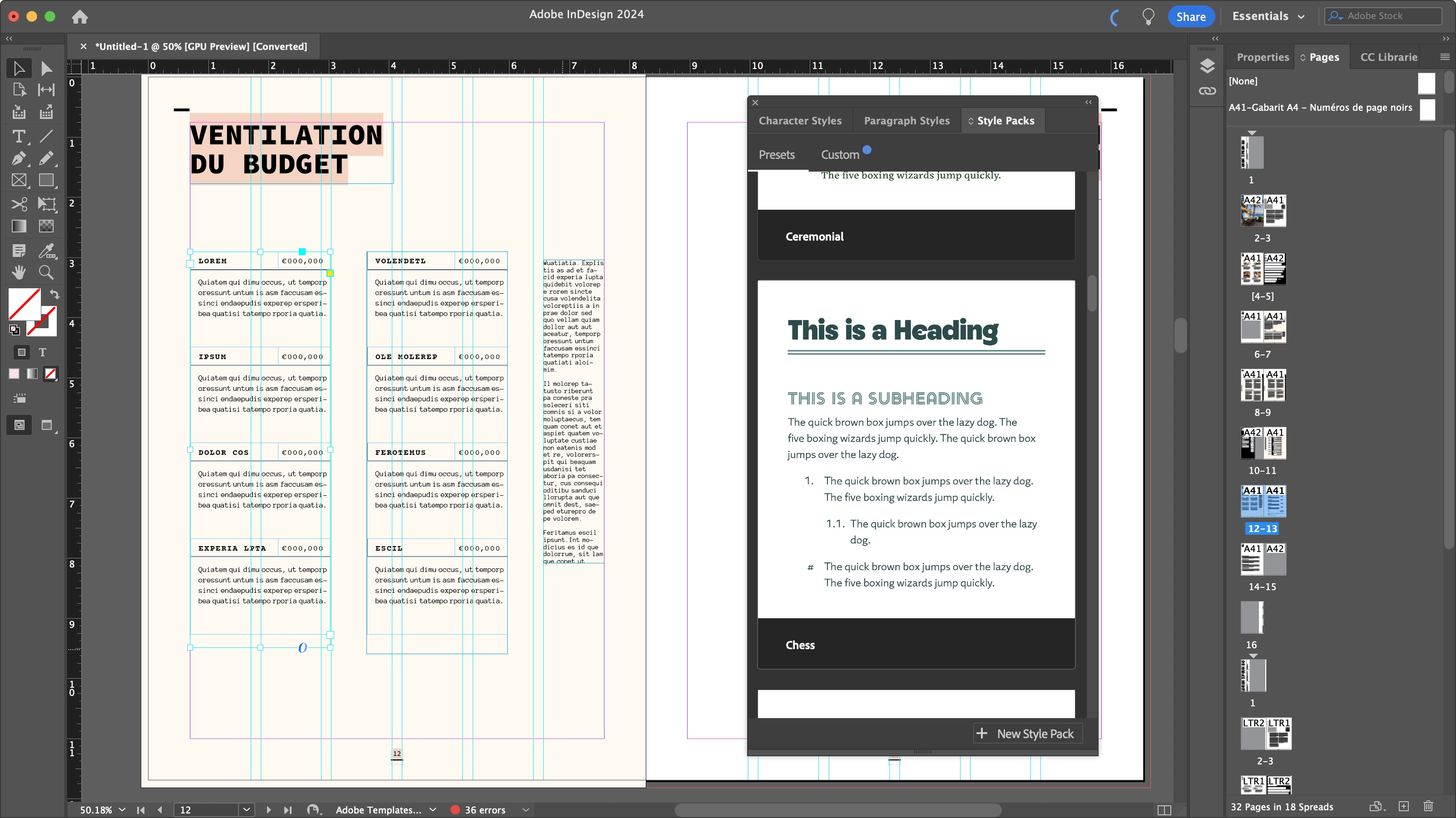
- A plethora of small improvements which are all very welcome to make this powerful DTP program more versatile, flexible, and accurate.
The last few updates have brought a lot of interesting new features, and we thought we’d highlight those that got our attention…
We found a lot to like, especially when it comes to customisation possibilities. You have Style Packs for one. Go to Window > Styles > Style Pack and choose a pre-saved collection which you can apply to your selected text boxes, with headers, styles, fonts, sizes, etc, changed instantly. Even better, you get to create your own packs which you can then export and share with other members of your team, or take with you when working on another machine.
Add to that the ability to import and export user settings is now a possibility, meaning that if you’ve configured your preferences just the way you like them on your machine, you’ll be able to replicate that on any other computer you’ll work on. That’s a huge plus for wandering designers.
Speaking of being on the go, it’s now possible to access and edit your files via InDesign Cloud Documents, which also lets you share these projects and collaborate with others easily.
If you need to share your work in progress, but there’s a few pages that aren’t yet ready to be seen, you now have the option of hiding specific spreads: right-click on a thumbnail and choose ‘hide spread’. That way, all concealed pages are skipped when in Presentation Mode, or when exporting a document.
Working with Indic or MENA languages comes with its own set of challenges, and the latest version of InDesign has worked to greatly improve its rendering of those glyphs by bringing in Harfbuzz as the default shaping engine. From the examples we saw, the improvements are very noticeable.
There are other new additions, like adding Google analytics in a published document, automatically including specific suffixes to JPEG and PNG exports, and password protecting InDesign files. These are not big tentpole features, but they all contribute to making InDesign a more powerful, versatile and accurate DTP, which can only be good news.
- Score: 4.5/5
Adobe InDesign: AI tools
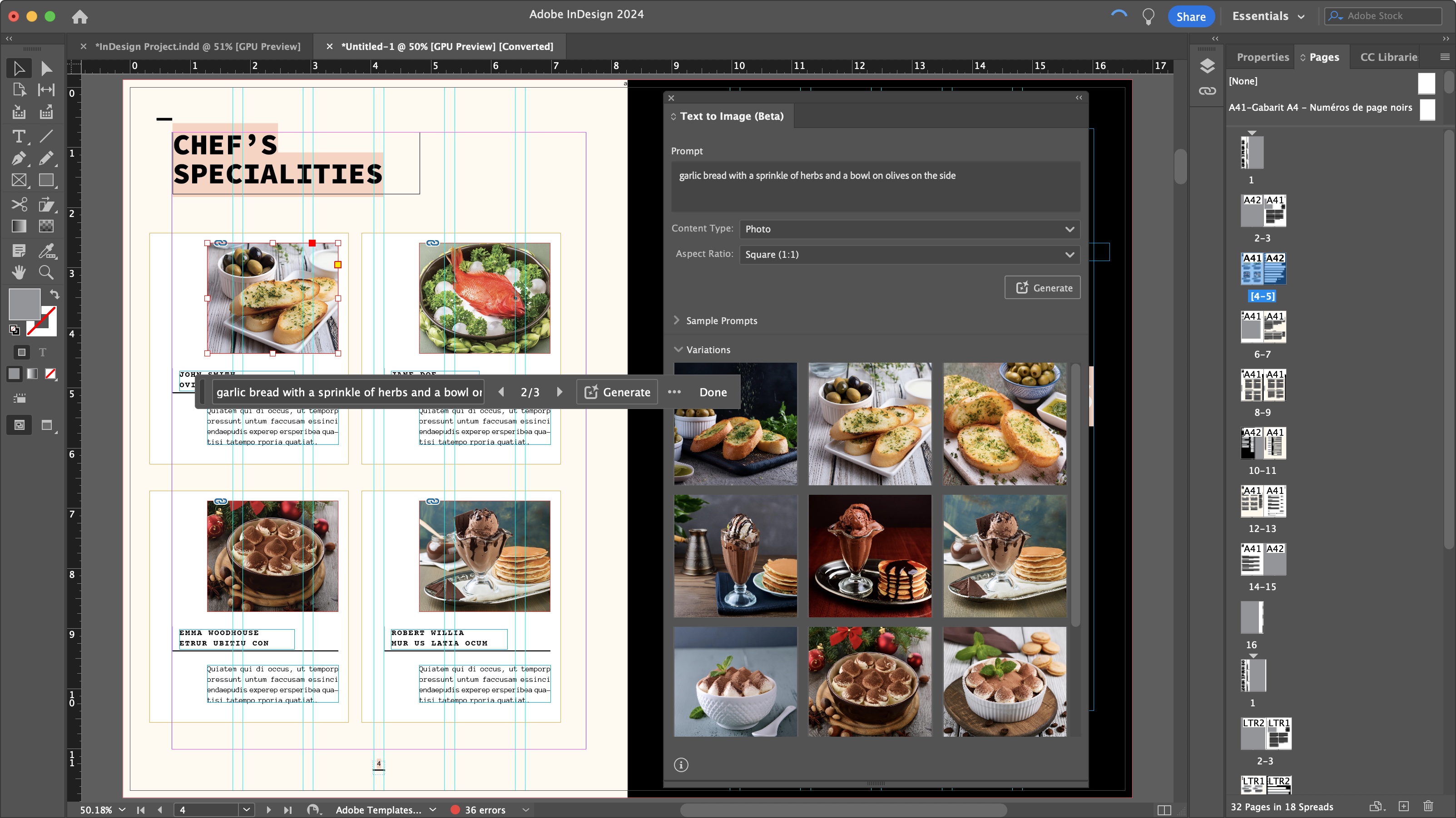
- AI is everywhere, and with generated images now accessible from within InDesign, who needs photographers?… but is that truly a good thing?
Version 19.4 of InDesign, released in April 2024, brings AI to the page layout tool. You can’t run away from it: AI is going to be everywhere. So what does ‘Text to Image’ bring to InDesign? As you might expect, it’s powered by Adobe Firefly. There’s one big caveat though: it only works with the English International and English North American versions of the software.
If you’re used to AI in other Adobe products, you’ll know what to expect: select an image placeholder to have a floating field appear. Type in a description, and Firefly will generate three variations for you to choose from.
Every time we try Firefly we find it gets better and better, giving us more accurate results without having to type in lengthy descriptions. It’s good in some ways, troubling for the industry in others. However to quickly create mockups without having to even leave InDesign, it’s fantastic. The interface is incredibly easy to use, you get to choose between photorealistic or a more artsy output, as well as the image’s aspect ratio, and the various generated images and their variations are preserved in a list for you, so you can choose to use them elsewhere in your project should you want to. We’ll just leave the controversial debate surrounding AI in general for another day.
- AI tools: 3/5
Should I buy?
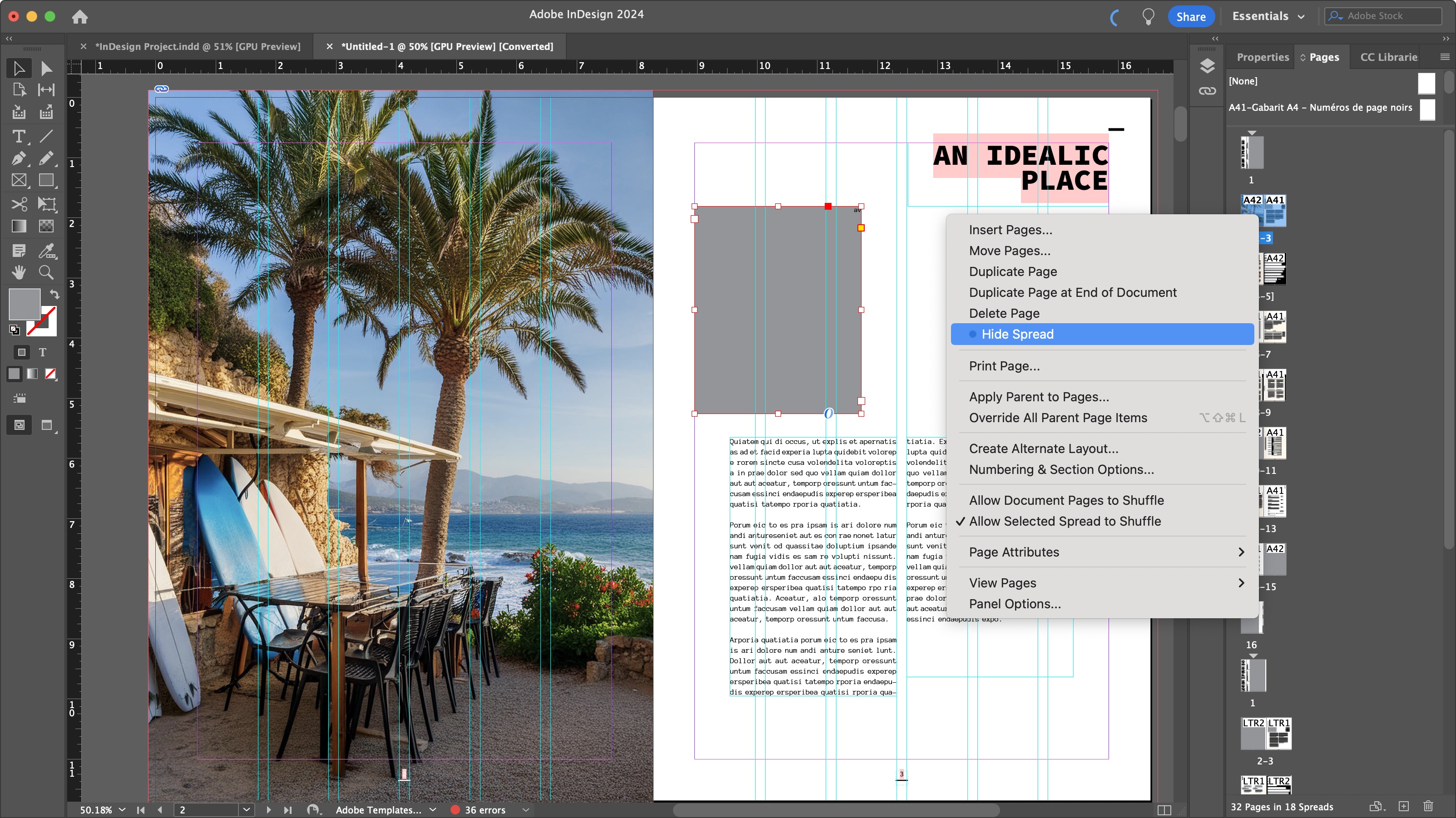
Buy it if...
You need a powerful, versatile and flexible DTP to design anything from a simple leaflet to a full imagazine.
Don't buy it if...
The options are above and beyond what you’re after - maybe a high-end word processor would be better suited to your needs, and you’re not a fan of renting the software you use.
For more design tools, we tested the best Adobe InDesign alternatives
Steve has been writing about technology since 2003. Starting with Digital Creative Arts, he's since added his tech expertise at titles such as iCreate, MacFormat, MacWorld, MacLife, and TechRadar. His focus is on the creative arts, like website builders, image manipulation, and filmmaking software, but he hasn’t shied away from more business-oriented software either. He uses many of the apps he writes about in his personal and professional life. Steve loves how computers have enabled everyone to delve into creative possibilities, and is always delighted to share his knowledge, expertise, and experience with readers.
